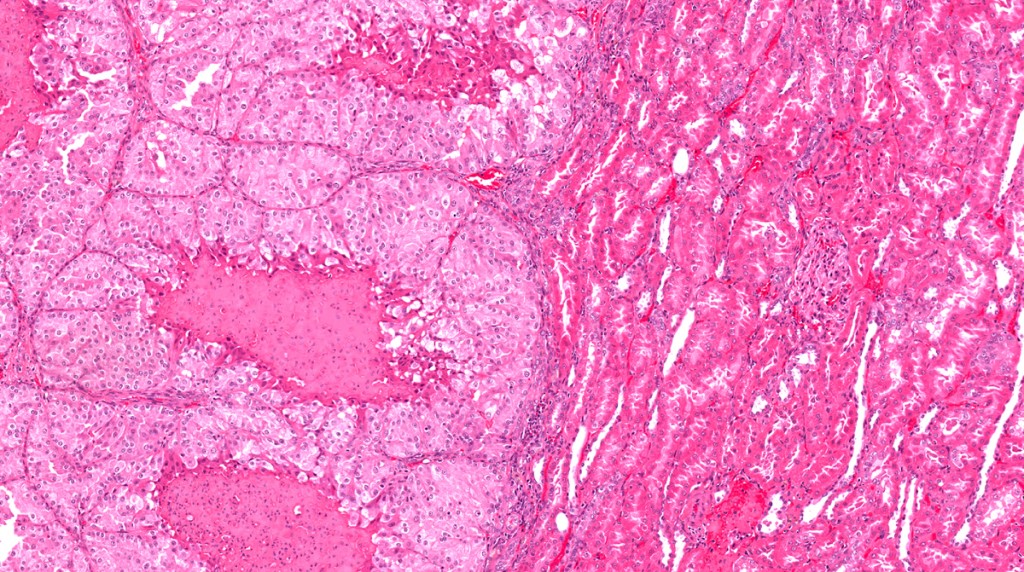New, robust methodology is side benefit
Huntsville, Ala. –Whether or not a gene is — that is, whether it is turned on or turned off — is in part controlled by a group of proteins called transcription factors. Scientists in the Myers lab at the HudsonAlpha Institute for Biotechnology recently published results of a basic research project undertaken to better understand mechanisms that determine cell type-specific transcription factor binding.
According to HudsonAlpha postdoctoral fellow Jason Gertz, lead author of “Distinct properties of cell type-specific and shared transcription factor binding sites,” such basic research may eventually help scientists to better anticipate such genetic mechanisms and potentially target those impacting disease states with therapies.
So how does a transcription factor know to activate in one type of cell but not another?
The Myers lab used an integrative approach to study estrogen receptor alpha. “We found that ERα exhibits two distinct modes of binding,” said Gertz. Shared sites, bound in multiple cell types, were found to be characterized by high affinity estrogen response elements, inaccessible chromatin and a lack of DNA methylation. Cell-specific sites were shown to have a lack of estrogen response elements, co-occurrence with other transcription factors and cell type-specific chromatin accessibility and DNA methylation.
In addition to finding two distinct modes of binding that in turn enabled accurate quantitative models of ERα binding and creation of a mapping tool for these sites, the project prompted a new methodology of looking at protein binding.
“Cells are an ideal experimental model,” said HudsonAlpha postdoctoral fellow Daniel Savic, “because they are grown in a controlled environment and can be easily manipulated. As a result they have been greatly utilized in research. However within this advantage also lies a notable disadvantage. Although cells offer a controlled system, making direct biological inferences about normal in vivo states directly from cells can be challenging. In this regard, primary tissues, despite their complexity, may be a more suitable model since they are derived from an in vivo context.”
The Myers lab was able to validate results obtained in the cell lines for ERα binding by a methodology called tissue ChIP-seq, by identifying the binding sites of ERα directly from tissue samples.
In this case, validation was literally driven home with a hammer. “Similar protocols have been described in the literature but our method seems to be highly robust, sensitive and is amenable to high throughput analysis,” said Savic. “The enhanced reproducibility, robustness, sensitivity and simplicity of the dry pulverization tissue ChIP-seq method used by the Myers team for analyzing transcription factor binding in primary tissues makes it a widely accessible assay to many labs.”
“Almost any laboratory can do it,” said Savic. “This method is important for the next phase of many research projects in the lab and introduces new ways to harness genomics for defining the genetic determinants of disease states. In this regard, the applicability of this method is quite powerful and far-reaching,” said Savic. The paper, “Distinct properties of cell type-specific and shared transcription factor binding sites,” may be found here. The recently published tissue ChIP-seq methods paper is found here.
About HudsonAlpha
The HudsonAlpha Institute for Biotechnology in Huntsville, Alabama, is the cornerstone of the Cummings Research Park Biotechnology Campus. The campus hosts a synergistic cluster of life sciences talent – science, education and business professionals – that promises collaborative innovation to turn knowledge and ideas into commercial products and services for improving human health and strengthening Alabama’s progressively diverse economy. The non-profit institute is housed in a state-of-the-art, 270,000 square-ft. facility strategically located in the nation’s second largest research park. HudsonAlpha has a three-fold mission of genomic research, economic development and educational outreach.



